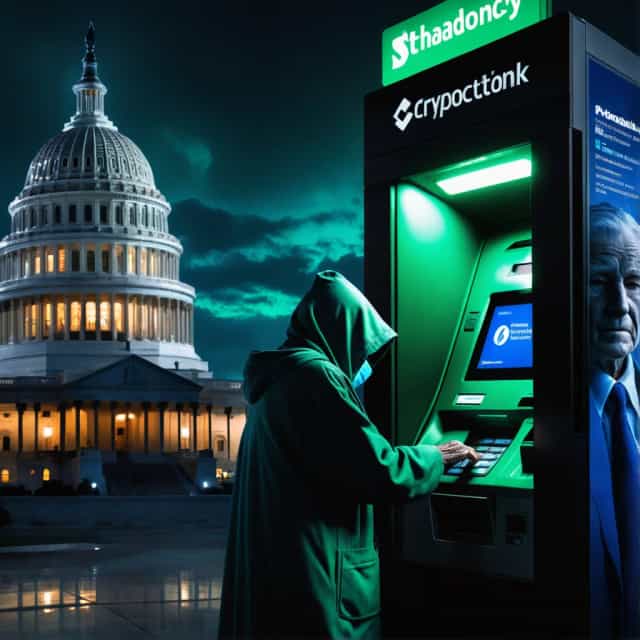
Image source: Block Media
Stablecoin Adoption Surges in Bolivia Amid Nationwide Dollar Shortages
Stablecoins are increasingly gaining traction in Bolivia, transforming into a vital financial alternative in a nation once staunchly opposed to digital assets. As private companies embrace these digital currencies for daily transactions, governmental hesitation persists. Nonetheless, the macroeconomic challenges caused by dollar shortages have positioned stablecoins as a compelling solution to maintain purchasing power and foster international trade efficiencies.
Why Stablecoins Are Thriving in Bolivia
Bolivia’s dollar scarcity and currency devaluation have created fertile ground for stablecoin adoption. Stablecoins, digital assets pegged to fiat currencies like the U.S. dollar, offer businesses and consumers a way to hedge against the volatility of the Bolivian boliviano. As a result, stablecoins are transitioning from a novel concept into a practical financial instrument in the hands of the private sector.
Private Sector Champions Stablecoin Payments
Amid ongoing dollar supply constraints, businesses in Bolivia are leading the way in stablecoin utilization. Key among these adopters is Toyosa, the official distributor for Toyota and Yamaha in Bolivia. Toyosa recently became the first company in South America to allow car purchases using stablecoins, marking a milestone in the realm of digital payments.
The company partnered with cryptocurrency platform Bitcove and Towerbank to implement a USDT-based QR code payment system. USDT, a stablecoin pegged to the U.S. dollar, has quickly become an appealing alternative to the increasingly scarce physical dollar. By adopting this system, Bolivian companies like Toyosa are addressing growing concerns about the depreciation of their national currency while meeting customer demand for dollar-like reliability.
Stablecoins as a Practical Alternative to Physical Cash
The utility of stablecoins extends beyond mere technical prowess. In Bolivia, stablecoins are becoming a de facto substitute for physical dollars which are difficult to obtain due to tightening regulatory controls and reduced dollar inflows. By offering a reliable and easily accessible alternative, stablecoins are helping businesses secure transactions and stabilize financial operations in uncertain economic conditions.
Government Reluctance Highlights Policy Divide
While private businesses are forging ahead, the Bolivian government has approached stablecoins and broader cryptocurrency adoption with caution. Earlier initiatives to explore stablecoins as a mechanism for energy transactions were ultimately dismissed. Instead, the government has signaled its preference for developing a Central Bank Digital Currency (CBDC).
The Limitations of CBDCs in a Globalized Economy
Analysts suggest that reliance on a CBDC might not provide the same level of flexibility or international transactional capacity as widely used dollar-pegged stablecoins like USDT. Unlike stablecoins, CBDCs are designed to operate within a country's centralized financial system, potentially limiting their global utility. For example, stablecoins can facilitate cross-border commodity payments, a feature particularly valuable in South America, where countries often trade under restrictive financial conditions.
However, Bolivia appears reluctant to follow this path, instead focusing on increasing control over its digital financial framework. This governmental stance underscores an ideological split between a regulated, state-monitored digital currency and private sector-driven alternatives.
Regional Dynamics of Stablecoin Adoption
Bolivia’s stablecoin adoption does not exist in isolation; it is part of a broader regional trend. Across South America, stablecoins are increasingly being used to navigate economic instability and financial sanctions.
Venezuela’s Influence on Bolivia’s Approach
A prominent example is Venezuela, where stablecoins have been integrated into critical financial transactions such as oil-related payments. This strategic adoption helps Venezuela counteract the effects of U.S. sanctions and minimizes reliance on traditional dollar systems controlled by Western financial institutions. Analysts speculate that Bolivia may draw inspiration from Venezuela’s model if stablecoins continue to provide measurable economic benefits.
Broadening Role of Stablecoins in South America
The rise of stablecoin use in Venezuela, Bolivia, and other economically volatile regions signifies a broader acknowledgment of their utility as value-preserving assets. Their ability to bypass hyperinflation, maintain cross-border payment efficiency, and reduce dependence on physical dollars is progressively being recognized at both grassroots and enterprise levels.
The Road Ahead for Stablecoins in Bolivia
The rapid uptake of stablecoins in Bolivia’s private sector signals a growing reliance on them as viable monetary tools in fragile economies. For businesses, they offer a solution to depreciating local currencies and unreliable access to foreign exchange. Yet, the Bolivian government’s cautious stance suggests a complex financial future where stablecoins may continue to thrive outside formal regulatory frameworks.
As the dollar shortage intensifies, pressure may mount on policymakers to reassess their conservative outlook toward private digital currencies. For now, the Bolivian stablecoin movement showcases a transformative financial evolution, driven not by centralized authority but by entrepreneurial adaptation amidst crisis. Bolivians, like many of their South American neighbors, are turning to stablecoins as a lifeline, redefining monetary systems to survive and adapt in an ever-changing economic landscape.










